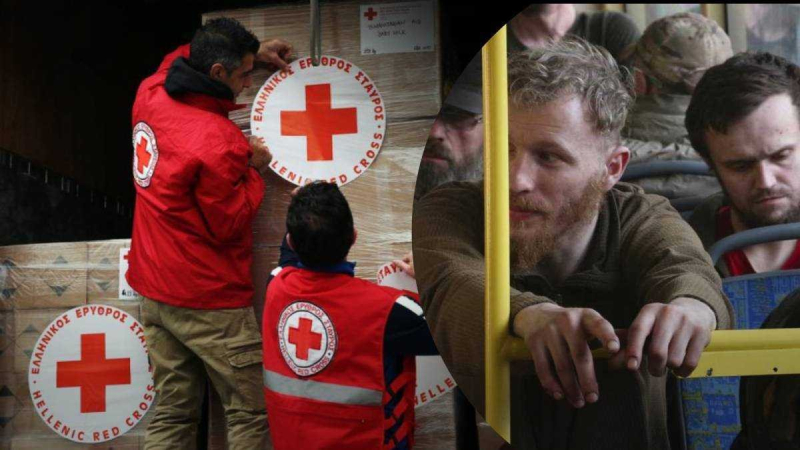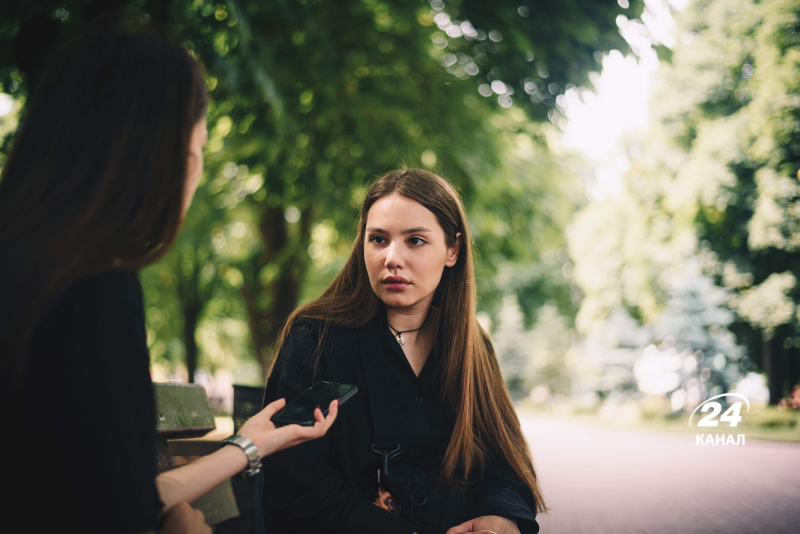
International Red Cross, channel 24 website comment/Channel 24 website collage
Relatives of the prisoners who were at Azovstal said in an interview with Channel 24 that they doubt that the ICRC is present in the colony where Ukrainians are now being held. They explain this by the fact that the footage published by the Russian media shows how the Ukrainian military is being tortured.
There was no contact with some of them from captivity. In order to understand the situation, the Channel 24 website turned to the International Committee of the Red Cross for a comment.
What preceded
Tatyana Vasilchenko with the call sign “Borisovna” is a paramedic of the volunteer organization “Hospitallers”, which is now in Russian captivity. Channel 24 website journalists talked to her sister Natalya. She said that Tatyana got in touch while in captivity only once. The woman called her daughter Ekaterina on the phone, because she knew her mobile number by heart.
In a conversation with her daughter, Tatiana noted that representatives of the ICRC were only once. In turn, the Red Cross confirmed to her daughter that Tatyana is in normal conditions.
The fiancee of Vadim Kitar with the call sign “Steiner” Ekaterina Turchanova, in an interview with the Channel 24 website, said that he had evidence that Ukrainian fighters were being tortured and held in inappropriate conditions. She drew such conclusions from a video published by Russian media on June 15, where Ukrainian defenders are being interrogated.
The girl noted that there was no communication or message from a third party, in particular, from the International Committee of the Red Cross.< /p>
This organization should provide photo and video recording of how and in what condition our fighters of the Azov regiment are. None of the wives, relatives, mothers, sisters have ever received any evidence about the presence of a third party or the Red Cross, she noted.
 According to the girl, there were definitely representatives of the Red Cross when the fighters left Azovstal, but there is no evidence that the Ukrainians had their representatives.
According to the girl, there were definitely representatives of the Red Cross when the fighters left Azovstal, but there is no evidence that the Ukrainians had their representatives.
I only speak for my situation. Since May 17, during the month of captivity, not a single call has been made either to my grandmother or to me. The fate of other military personnel is unknown, because they also do not get in touch. Precisely “Bears,” she stressed.
What they say in the International Committee of the Red Cross
The editors of the Channel 24 website turned to the International Red Cross for comment. The response states that the ICRC visits prisoners of war from all sides of an international armed conflict. And continues the two-way dialogue to gain access to all captive people.
We believe that keeping this dialogue confidential will help us get more results, which is why we do not disclose all the details of this work publicly. Families looking for the whereabouts of a captive or missing relative can contact our Central Tracing Agency via the link, the message says.
Recall that on May 17, the ICRC, at the request of the parties, began to register the battalion commanders who left the Azovstal plant, including the wounded. The ICRC does not transport prisoners of war to their places of detention.
The registration process, which takes place with the assistance of the ICRC, includes self-filling in a form with personal data: full name, date of birth and the name of the next of kin. This information allows the ICRC to track the fate of the captives and make sure they can keep in touch with their families.
According to the mandate given by States to the ICRC under the Geneva Conventions of 1949, the ICRC must have immediate access to all prisoners of war in all places of detention. The ICRC must be allowed to communicate with prisoners of war without witnesses, and the duration and frequency of such visits must not be unreasonably limited.
When circumstances are resolved, each side of the conflict must take all possible measures to search for and collect the bodies of the dead. Under international humanitarian law, the ICRC maintains a confidential dialogue with the parties to the conflict on their obligations.
The Geneva Conventions, as well as customary international humanitarian law (IHL), provide for the ICRC's right to visit all prisoners of war and civilian internees, wherever they may be, during international armed conflicts. These visits help to ensure respect for their lives and dignity by reminding the authorities that the treatment of prisoners and the conditions of their internment or detention must comply with IHL standards. This includes access to health care, food and water. They should also not be subjected to torture, intimidation or violence. In addition, they must be protected from public curiosity.
Evacuation of the defenders of Mariupol from Azovstal: the main thing
- On May 16, Ukraine started the procedure for evacuating the Ukrainian military from the Azovstal plant. First, 53 seriously wounded were evacuated to a hospital in temporarily occupied Novoazovsk. There they are required to provide medical assistance. Another 211 Ukrainian defenders managed to take the humanitarian corridor to Yelenovka.
- Subsequently, information appeared in the media that at least 7 more buses with Ukrainian military left Azovstal. However, the Ukrainian side has not yet spoken about the exact number of fighters.
- Further on, Ukrainian fighters should be exchanged for Russian prisoners of war. Minister for Reintegration of the Temporarily Occupied Territories Irina Vereshchuk stressed that the soldiers would certainly be returned to the territories controlled by Ukraine.
- The General Staff of the Armed Forces of Ukraine noted that the Mariupol garrison fully complied with the order, since for more than 80 days the military pulled over superior enemy forces.
- Alexander Vlasenko, representative of the delegation of the International Committee of the Red Cross in Ukraine, confirmed the information to Channel 24 that the employees The International Committee of the Red Cross visited part of the Ukrainian military who left the Azovstal plant on May 18-19.
On the topic – Evacuation of the wounded from Azovstal: watch the video

